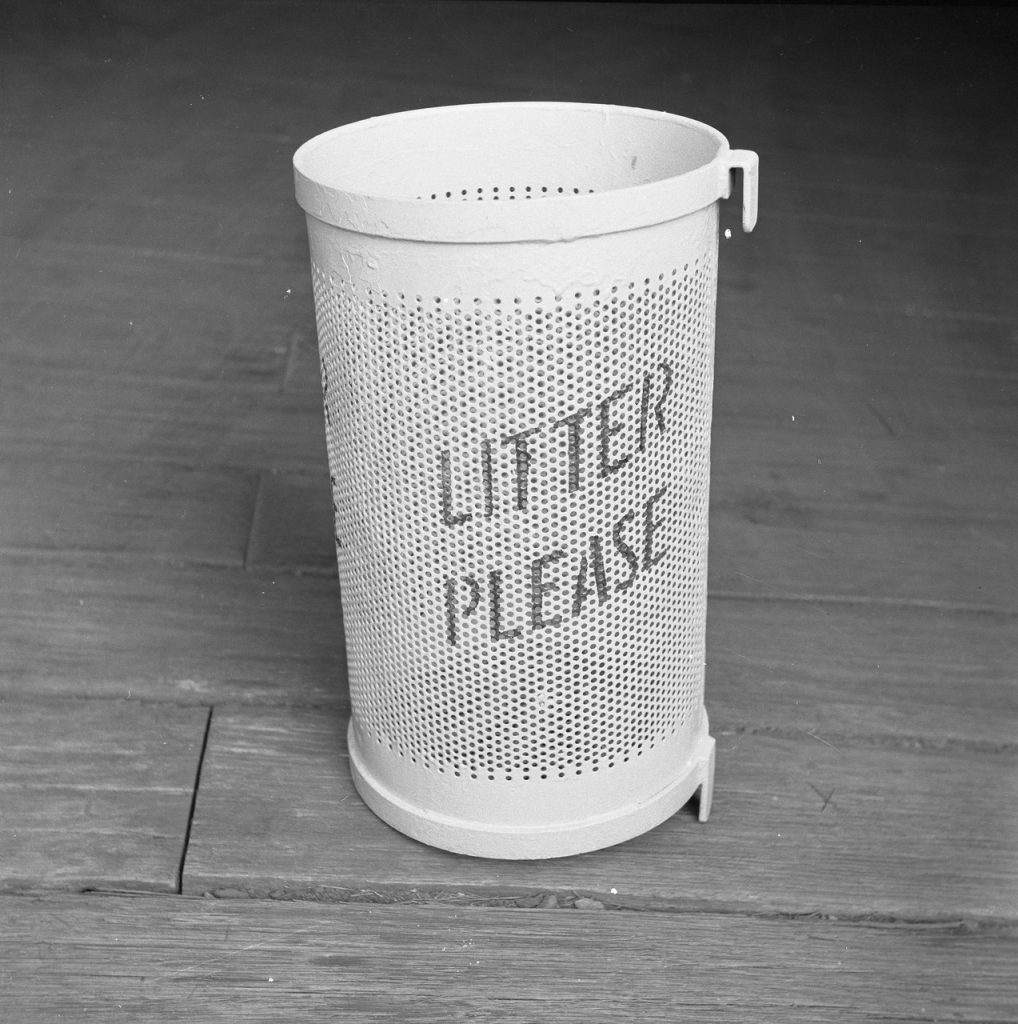N936 Litter Basket 2008
City of Melbourne
Registration number
1290529
Artist/maker
City of Melbourne
Printer
CPL Services
Title
N936 Litter Basket
Production date
2008
Medium
photographic paper
Dimensions (H x W x D)
25 x 25 cm
Credit line
City of Melbourne Art and Heritage Collection
Keywords
Summary
A white garbage bin with smalls holes around it and "LITTER PLEASE" stencilled on it.
This print is produced from original negatives which are a part of the Engineering Services branch photofile from the late 1950s and early 1960s.
One of the collection’s outstanding series of photographic images is the so-called ‘photofile collection’ of approximately 1,600 medium format negatives produced in the decade that followed the 1956 Olympic Games. During this period Melbourne moved rapidly toward becoming a modern industrialised city, embracing contemporary international design aesthetics with structures such as the ICI building and Myer Music Bowl.
The Engineering Branch itself was large and well equipped and in 1965 the branch had over 600 employees spread over three locations. The branch actually did its own work rather than managing contractors. A great many of the branch’s projects were photographed and the images printed then pasted by category into large annotated books, ‘photofile’ books.
These photographs, taken as records of activities and objects relating to the branch’s activities simultaneously say exactly what was originally intended – a pothole is a pothole, a trench is a trench -- and yet a great deal more. A photograph is quite unaware of any singular intentions that its maker might have, and given the opportunity will include all of the minutia that makes up the chaos of daily life. This phenomenon, which American photographer Lee Friedlander defined as being indicative of photography’s “generous” nature, provided photographer and curator Louis Porter with the framework within which he re-ordered images and selected images from the ‘photofile’ archive for his 2009 City Gallery exhibition, ‘Research and Analysis’.
Photography has dealt in elusive truths since its invention 175 years ago. Despite the intentions of its creator, the meaning of a photograph not only changes the further in time we move away from it, but also relies a great deal on the context we place it in. The City of Melbourne’s engineering photographs, originally part of the Engineering Branch’s own archive, now reside in the City Collection where their meaning and purpose has been re-evaluated. This is not to suggest that they no longer serve as records of engineering practices, but that they have been augmented in their meaning through juxtaposition with a broader collection, which includes cultural and historical objects and documents, as well as evidentiary ones.
